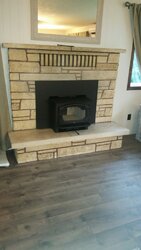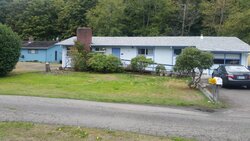My apologies if this has been asked. I did try some searching and was not able to locate this same scenario.
We own a 1967 home that has a fireplace which, as I understand, includes a Heatilator. We very recently had a Lopi Revere insert installed to help improve heating. What we have found is that the house now, on a regular basis, has a smokey/sooty smell coming from the fireplace. It is not from the insert (since we have not yet had a chance to use it).
Prior to the insert, when utilizing ventilation fans within the house, we would often get the same smell within the house, even with damper shut and glass doors closed. Before purchasing and installing the insert, we asked about the smell and were assured it would not be an issue.
My questions:
P.S. We know the hearth is not sufficient and are working on a hearth extension pad.
We own a 1967 home that has a fireplace which, as I understand, includes a Heatilator. We very recently had a Lopi Revere insert installed to help improve heating. What we have found is that the house now, on a regular basis, has a smokey/sooty smell coming from the fireplace. It is not from the insert (since we have not yet had a chance to use it).
Prior to the insert, when utilizing ventilation fans within the house, we would often get the same smell within the house, even with damper shut and glass doors closed. Before purchasing and installing the insert, we asked about the smell and were assured it would not be an issue.
My questions:
- Is this temporary and likely to resolve in the coming days?
- If not, what is the solution for fixing it? Not only are there small gaps around the metal surround, but during the install, the tubes for the Heatilator were cut to allow for the flue to pass through.
- If a solution is to fill gaps, is it safe to block off the legacy Heatilator vents?
P.S. We know the hearth is not sufficient and are working on a hearth extension pad.



